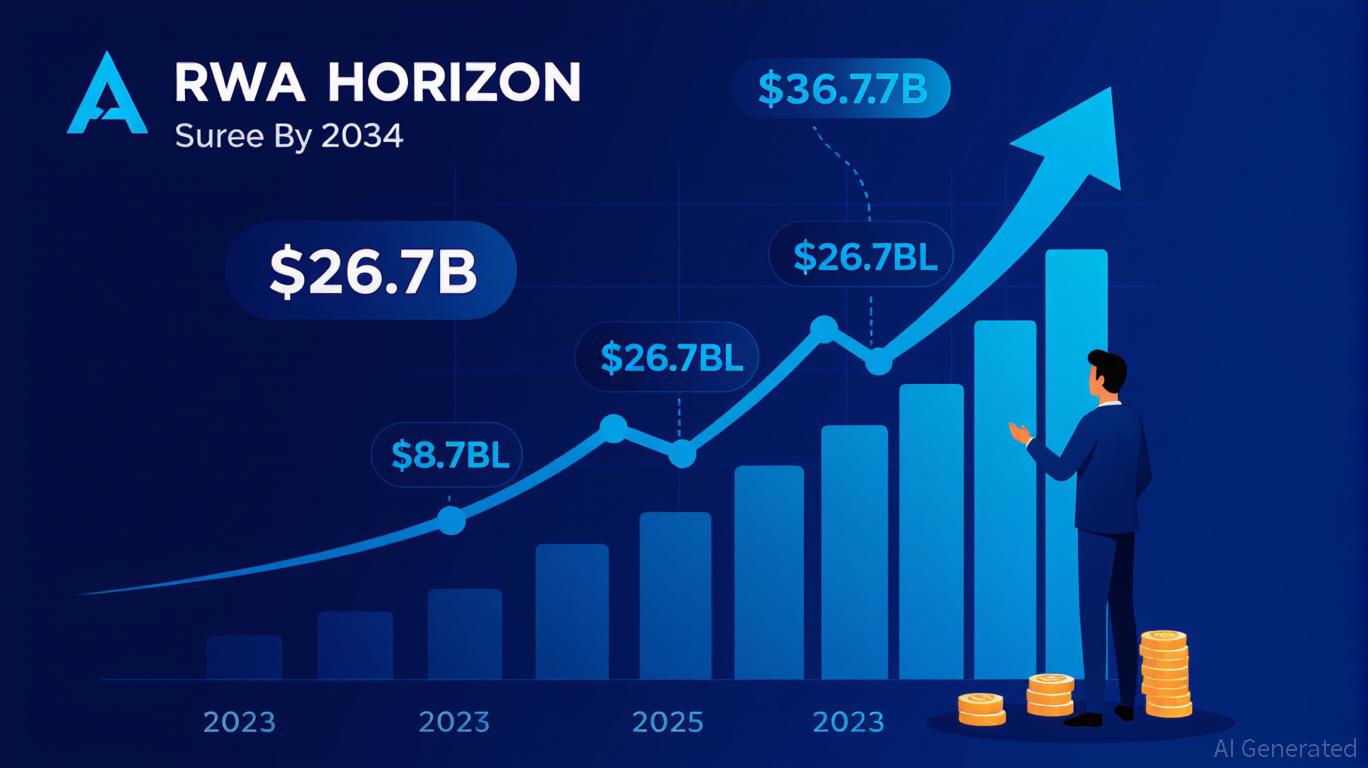Bitcoin News Today: Inflows Stall, Bulls Defend $110K as Bitcoin ETFs Bleed $1B
- Bitcoin ETFs recorded $972M outflows this month, the second-largest since January 2024, per SoSoValue data. - Analysts link declining inflows to BTC's price drop from $124K to $100K, requiring $404B inflows to reach $150K by year-end. - Institutional buyers like MicroStrategy added 3,081 BTC ($356.9M), countering bearish sentiment amid $1B ETF outflows. - Market dynamics show shifting capital to ETH ETPs ($2.5B inflows) and whale-driven BTC-to-ETH trading activity. - S&P 500's bullish reversal contrasts
Bitcoin ETF inflows have seen a significant fluctuation in recent months, with the U.S.-listed exchange-traded funds (ETFs) having amassed $53.9 billion in investor money since their inception in January 2024. However, in the current month, these funds have registered a net outflow of $972 million, marking the second-largest outflow since their launch, only behind the $3.56 billion outflow in February, according to data from SoSoValue. This trend has raised concerns among market analysts, who believe the slowdown in ETF inflows is a key reason for Bitcoin’s poor price performance this month. The price of BTC peaked at a record high of over $124,000 early this month and last traded just above $100,000. Matrixport, a cryptocurrency research firm, warned that the current outflows are a sign of seasonal headwinds and emphasized the importance of capital flows in driving BTC prices higher.
Despite the recent outflows, there is still optimism in the market regarding Bitcoin’s long-term prospects. The consensus among analysts is that BTC will continue to gain ground into the year, potentially reaching levels above $150,000. However, achieving this target would require a substantial increase in inflows. According to Markus Thielen, founder of 10x Research, Bitcoin would need roughly $404 billion in total inflows this year to reach the $150,000 price level. This would mean an additional $173 billion in inflows between now and the end of the year, which is double the combined allocations from Bitcoin ETFs and MicroStrategy since early January 2024. Thielen emphasized that while Bitcoin’s macro narrative is important, real capital flows are essential for the price to rise.
Bitcoin’s price dynamics have been influenced by both large whale activity and institutional investment strategies. A whale entity deposited about 22,769 BTC ($2.59 billion) to Hyperliquid (HYPE) for sale and subsequently purchased 472,920 $ETH ($2.22 billion) in spot and opened a 135,265 $ETH ($577M) long position. This activity highlights the interplay between Bitcoin and other cryptocurrencies, as investors shift their focus from BTC to Ethereum (ETH). Month-to-date, ETH ETPs have seen $2.5 billion in inflows, while BTC has experienced $1 billion in outflows. This shift in investor interest suggests a potential shift in market sentiment and could lead to a broader altcoin rally.
Institutional investors are also playing a crucial role in shaping the market. Michael Saylor’s Strategy, the world’s largest public BTC holder, bought 3,081 BTC for $356.9 million, increasing the firm’s BTC holdings to 632,457 BTC, according to a US Securities and Exchange Commission filing on Monday. This move underscores the continued institutional interest in Bitcoin despite the recent outflows and provides a counterbalance to the bearish sentiment. The support level for Bitcoin is currently at $110,530, and bulls are defending this level, although bears are exerting significant pressure.
The price movements of Bitcoin are also influenced by broader market trends. The S&P 500 Index (SPX) turned up sharply from the 20-day exponential moving average (6,392) on Friday, signaling solid buying on dips. However, the relative strength index (RSI) is flashing signs of a negative divergence, suggesting that bullish momentum is weakening. Similarly, the US Dollar Index (DXY) rose above the moving averages on Thursday, but higher levels attracted solid selling by the bears. These developments highlight the interconnected nature of financial markets and the potential for cross-asset influences on Bitcoin’s price.
In conclusion, the recent performance of Bitcoin ETFs and the associated price movements of BTC are shaped by a combination of institutional activity, investor sentiment, and broader market dynamics. While the current outflows pose a challenge for the bulls, the long-term outlook for Bitcoin remains cautiously optimistic. Achieving the $150,000 price target will require a significant increase in capital inflows and sustained institutional support. The market will continue to monitor these factors closely as it navigates the evolving landscape of cryptocurrency investments.
Disclaimer: The content of this article solely reflects the author's opinion and does not represent the platform in any capacity. This article is not intended to serve as a reference for making investment decisions.
You may also like
The AI Chatbot Arms Race: Evaluating the Investment Potential of Google Gemini and xAI Grok as ChatGPT Rivals
- Google Gemini and xAI Grok-4 compete with ChatGPT using divergent strategies: ecosystem integration vs. premium performance. - Gemini leverages Google's product ecosystem and tiered pricing to dominate enterprise and Android markets, while Grok-4 targets high-value users with real-time data and advanced reasoning capabilities. - Financially, Google benefits from Alphabet's $85B infrastructure investments, while xAI faces $1B/month burn rates despite $80B valuation driven by Musk's brand and X platform ac

Aave's Horizon: Unlocking Trillions in Onchain Liquidity Through Institutional DeFi Integration
- Aave Horizon unlocks institutional liquidity by tokenizing real-world assets (RWAs) like U.S. Treasuries and real estate, enabling stablecoin borrowing and yield generation via DeFi. - The RWA market surged to $26.71B by August 2025 (260% YTD growth), with Ethereum hosting 51.93% of value and BlackRock’s tokenized fund expanding from $649M to $2.9B. - Partnerships with JPMorgan, Franklin Templeton, and the U.S. Senate’s GENIUS Act validate Aave Horizon’s hybrid model, blending TradFi compliance with DeFi

Ethereum ETFs Outperforming Bitcoin: A Strategic Shift in Institutional Capital Allocation
- Q2 2025 saw institutional capital shift to Ethereum ETFs, capturing $13.3B inflows vs. Bitcoin's $88M. - Ethereum's 4-6% staking yields, regulatory clarity, and DeFi infrastructure drove its institutional adoption. - SEC's utility token reclassification and in-kind mechanisms boosted Ethereum ETF confidence. - Institutional portfolios now favor 60/30/10 allocations (Ethereum/Bitcoin/altcoins) for yield and stability. - Ethereum's 90% lower L2 fees post-Dencun upgrade solidified its infrastructure dominan

Decentralized Governance and the Rise of Bitcoin Treasuries: A New Paradigm for Institutional Investors
- Institutional investors increasingly adopt Bitcoin as strategic asset via decentralized governance models, mirroring industrial firms' operational agility. - Decentralized BTC-TCs empower mid-level managers for real-time decisions, using metrics like mNAV and leverage ratios to align with long-term goals. - Regulatory clarity (CLARITY Act, spot ETFs) and innovation (stablecoins, lending) normalize Bitcoin as diversification tool alongside traditional assets. - Investors prioritize transparent governance
